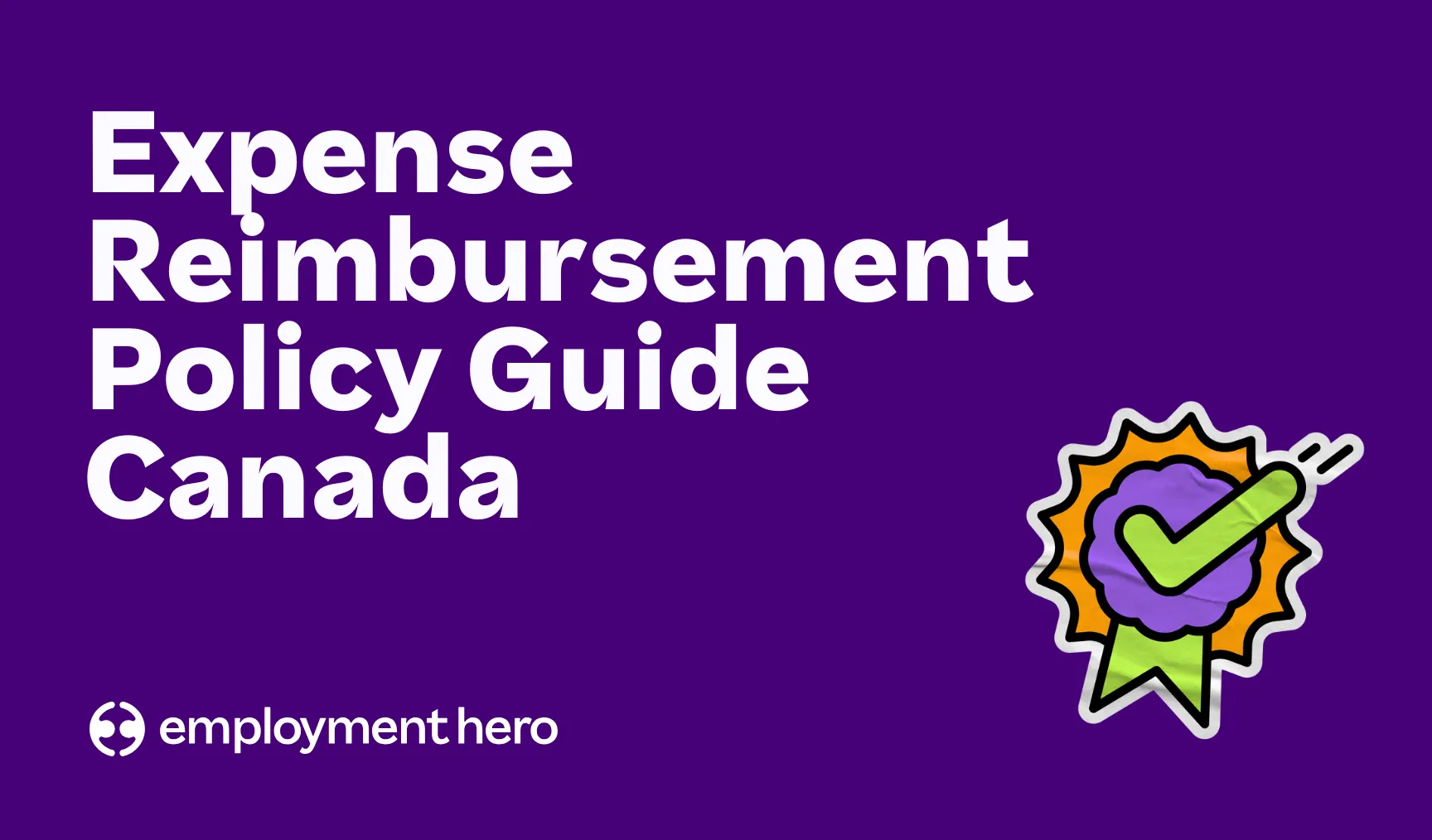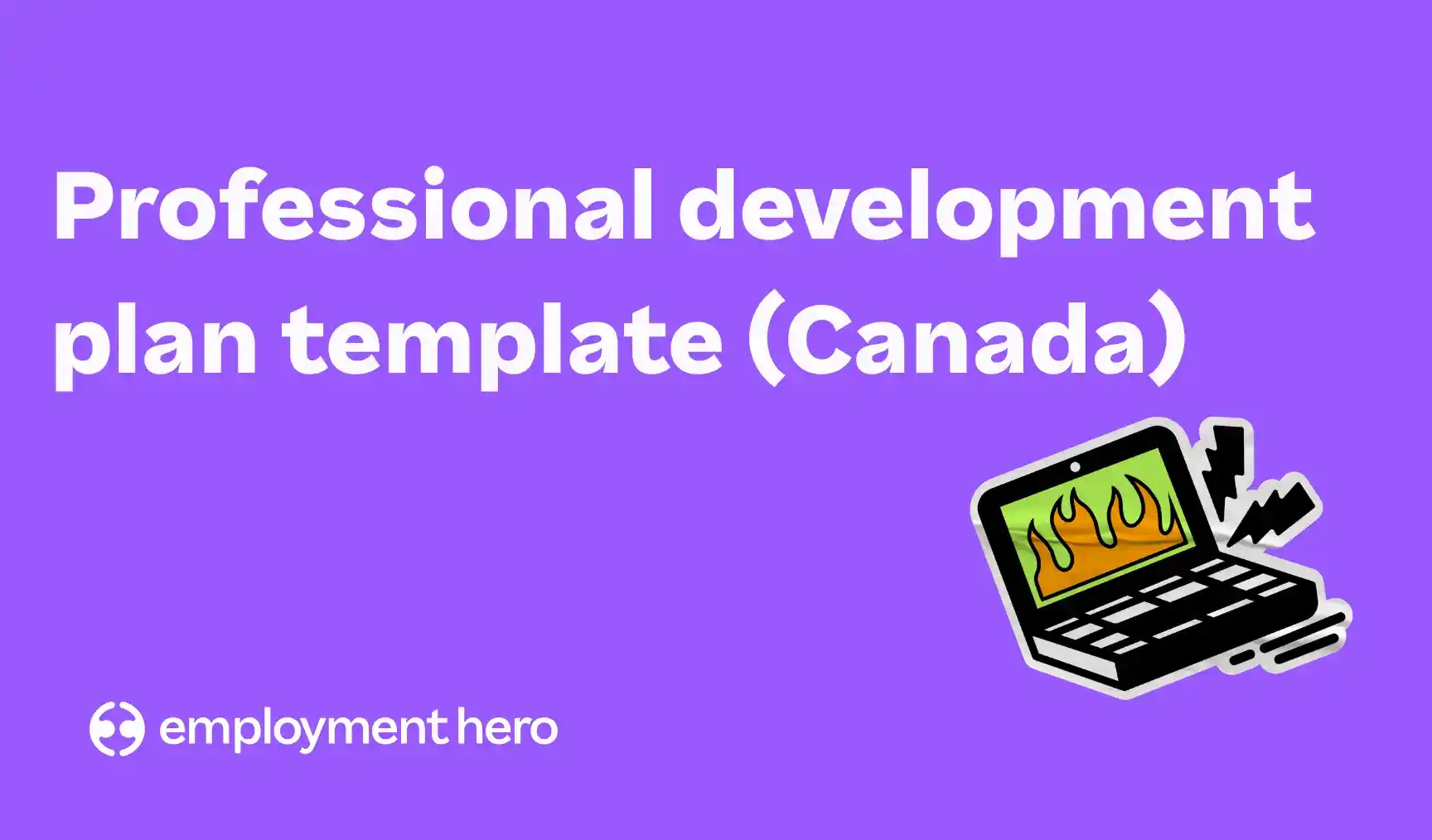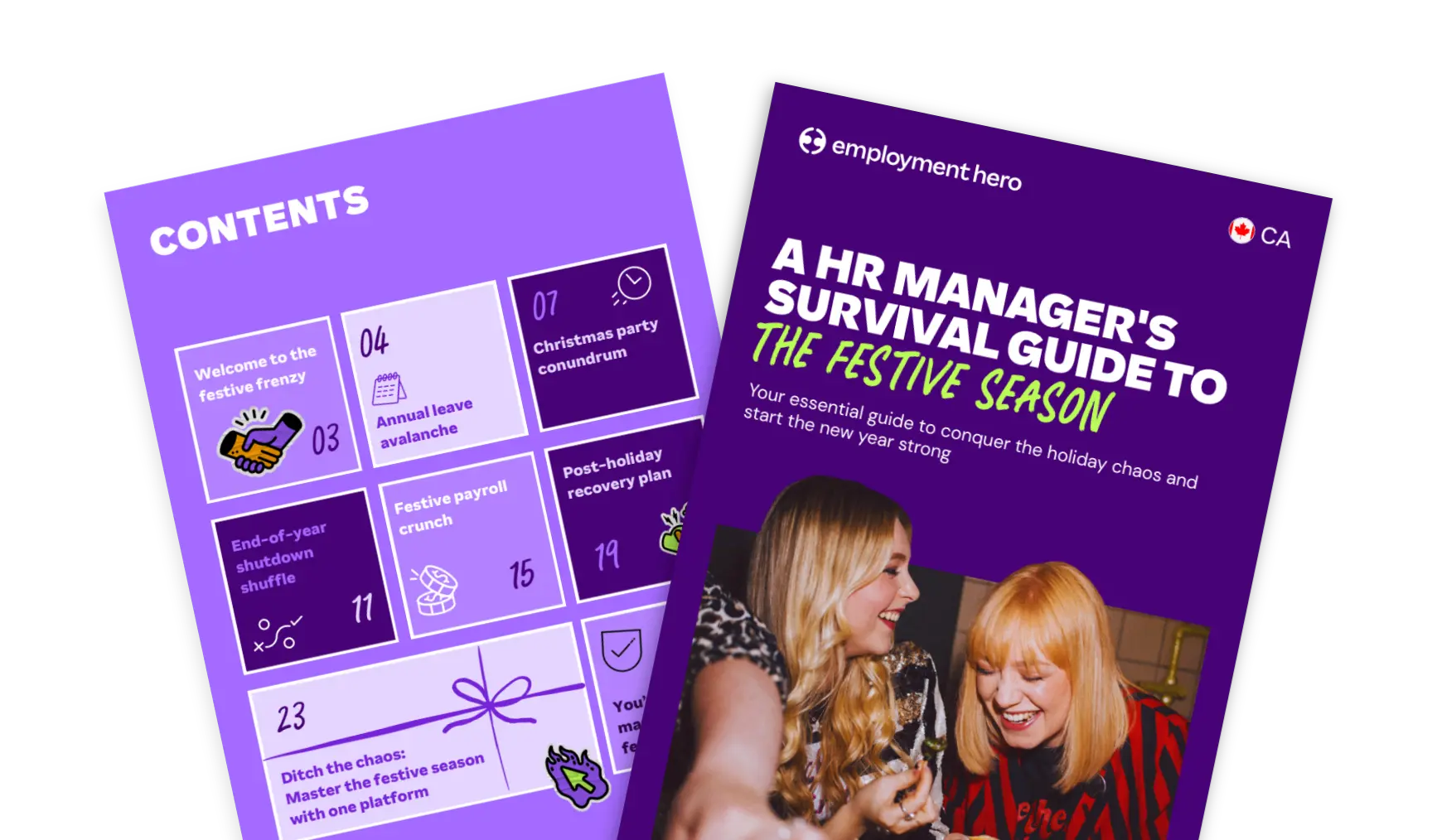Communication strategy: How to talk so Gen Z will listen

Contents
Gen Z doesn’t want your corporate ladder. They don’t want a weekly memo in HR-speak. And they definitely don’t want another half-hearted promise about “flexibility.” What they want is to be spoken to like adults who are shaping the future of your business right now. If you can’t do that, the harsh reality is: you won’t keep them.
In Canada, Gen Z is the workforce to watch. They are the most mobile, the most vocal, and the most misunderstood generation in your teams. Employment Hero’s 2025 Annual Jobs Report shows that nearly half say they’d relocate for the right role, and many are working longer hours to get ahead despite juggling side hustles.
At the same time, they’re pragmatic — most prioritize security over ambition, and a meaningful portion believe AI is already shrinking their opportunities. This combination of hunger, caution, and complexity makes their communication needs unlike any group before them. And if you’re an SMB leader, how you communicate with them is no longer a “soft skill.” It’s the difference between talent that sticks and talent that slips away.
When side hustles rewrite attention spans
One third of Canadian full-time workers are already holding multiple jobs, according to the Jobs Report. For Gen Z, it’s even higher. That reality transforms how you should be thinking about communication at work. Attention is fragmented, schedules are unpredictable, and competing priorities are constant. The nine-to-five inbox blast no longer cuts it.
Instead of drowning employees in messages, SMB leaders need to design communication that’s sharp, layered, and easy to re-enter. That might mean publishing decisions in a format that can be skimmed in under a minute, pairing a short video with a text summary, or closing every message with a single, visible next step. In a workforce juggling more than one employer, communication has to be a welcome clarity, not another time sink.
Here’s the why: poly-employment creates invisible walls between priorities. A younger worker finishing a side gig at midnight doesn’t want to scroll through ten paragraphs to find the key update. They want a north star and an action. If you don’t provide it, they disengage. And when Gen Z disengages, they don’t just tune out — they look elsewhere.
Security talks louder than ambition
The Jobs Report shows that most Canadian workers — especially Gen Z — put job security above career ambition. They want transparency about pay, clarity about skills that will lead to growth, and reassurance that their work connects to something stable. If your communication glosses over the realities of the market, you’ll lose credibility fast.
Think about it: one in four Canadian workers believes AI is reducing job opportunities. That’s a huge number of employees carrying quiet anxiety into every meeting. You can’t hype “innovation” without showing them where they fit. SMB leaders must treat communication as a stabilizer. Say what’s changing, explain why, and point to the concrete skills that will still matter. That’s how you build trust in a generation that’s cautious for good reason.
In Quebec, the preference for less pressure is even stronger, while in Atlantic Canada, ambition remains higher. These regional nuances, highlighted in the Jobs Report 2025, mean a one-size-fits-all communication style won’t work. Tailoring your tone and emphasis to local expectations is a subtle but powerful way to show empathy and earn loyalty.
Growth without the ladder
Here’s the uncomfortable truth: Gen Z doesn’t buy into your ladder. The Jobs Report confirms that over half of Canadian workers say they don’t want roles with more pressure. The title-driven, rung-by-rung story of success doesn’t land anymore. Instead, younger workers respond to communication that frames growth as new skills, wider impact, and freedom to move — sideways, not just upwards.
This doesn’t mean ambition has vanished. In fact, Gen Z is often the most restless cohort. Many say they’d like to do something completely different in their careers. Communication should reflect this reality. Talk less about promotion timelines and more about portable skills, lateral opportunities, and how the work today builds credibility for tomorrow. When employees hear growth framed this way, they stop seeing pressure as the only path to progress.
Practical value here is clear. When you frame communication around “skills-to-pay” pathways, Gen Z sees their effort linked to tangible rewards. It’s not about the next rung. It’s about the next skill. That shift creates engagement without piling on pressure.
See how it all comes together
Employment Hero’s Employment Operating System helps SMBs communicate with clarity and purpose. Share updates once, reach every employee in the app, and track responses in real time. Build growth conversations into the flow of work — without more admin.
Culture is the message
Communication has to extend beyond job descriptions and office perks. Younger workers want to know what life looks like inside your business: how leaders make decisions, how learning happens, and how community is built. If your communication is sterile or generic, they’ll assume your culture is too.
This is where Canadian SMBs have an edge. You can tell real stories. Share the decision-making process, spotlight growth journeys, and let younger voices be heard in company-wide updates. Communication becomes the evidence of culture. If the words you share don’t match the lived experience, Gen Z will call it out — and walk away.
Silence looks like instability
What happens if you don’t change how you communicate? You risk more than disengagement. In a market where poly-employment is rising and security is prized, silence reads as instability. Younger workers will fill the gap with their own assumptions, often negative ones. In practical terms, that means turnover, lost productivity, and brand damage.
On the flip side, clear and authentic communication doesn’t just keep Gen Z engaged. It positions your SMB as a place where employees feel informed, valued, and part of the story. That reputation travels fast. In a generation where mobility is normal, your words could be the reason someone chooses to stay.
The AI elephant in the room
One in four Canadian workers already believes AI is eating away at opportunities. For Gen Z, who are early in their careers, this is amplified. They are looking for leaders who acknowledge the disruption and show a roadmap through it. Communication that dodges the topic feels evasive. Communication that addresses it head-on builds resilience.
Talk openly about how your business is using AI, where it might replace tasks, and where it opens new opportunities. Pair this with clear commitments to training and development. When your words link directly to skills and pay, you transform fear into focus. That’s leadership Gen Z can respect.
Stop reducing Gen Z to emojis
Too many managers still reduce Gen Z communication to slang, emojis, or TikTok references. Gen Z workers aren’t looking for brands or bosses who mimic them. That means being clear, direct, and open to real dialogue. Patronizing or vague communication only erodes trust. What actually lands with younger teams is honesty, specificity, and follow-through. If you say something matters, show them why. If you ask for feedback, act on it. Respect builds loyalty; gimmicks don’t.
Communication is your retention strategy
It’s easy to dismiss communication as soft skills, but in Canada’s 2025 job market, it’s strategy. Poly-employment, AI anxiety, security-first mindsets, and a rejection of the ladder — these are communication problems as much as workforce trends. How you talk about them determines whether your business is seen as stable or shaky, progressive or out of touch.
The value is clear. Effective communication creates:
- Retention: When employees feel seen and informed, they stay.
- Productivity: Clarity reduces wasted time and duplicated effort.
- Reputation: Transparent messaging attracts talent who want stability with purpose.
Every SMB leader is already communicating. The difference lies in whether those messages are noise or clarity. Get it wrong, and younger workers drift. Get it right, and you create loyalty in the very generation most willing to move.
Hello, future of work
Employment Hero gives Canadian SMBs the tools to communicate clearly, consistently, and credibly. From company-wide announcements to growth check-ins, it’s one system that helps you speak the language of the workforce of tomorrow. Learn more about the Employment Operating System.
FAQs about communicating with Gen Z at work
Be specific, transparent, and concise. Respect attention spans shaped by poly-employment. Pair text with video for clarity. Close every message with a visible next step.
Employment Hero’s 2025 Annual Jobs Report shows more than half want jobs with less pressure. They value skill growth and lateral moves over rigid promotion paths. Communication should reflect this shift.
Talk openly about AI’s role in your business. Explain where it changes tasks, where it creates opportunities, and how you’ll support upskilling.
Generic updates, jargon-filled memos, silence around change, and empty promises. All of these create distrust and disengagement.
The 2025 Annual Jobs Report shows it’s not the main driver. Only a minority prioritize remote or hybrid work when switching jobs. Communication that highlights mentorship, culture, and growth is more effective.
Clear communication creates trust and stability. When employees understand decisions, growth paths, and how their work fits, they are less likely to leave.
Employment Hero’s Employment Operating System centralizes announcements, feedback, recognition, and growth conversations. It helps SMB leaders speak with consistency and reach every employee in one place.
Related Resources
-
 Read more: Expense Reimbursement Policy Guide Canada
Read more: Expense Reimbursement Policy Guide CanadaExpense Reimbursement Policy Guide Canada
Download a free expense reimbursement policy guide for Canadian businesses. Learn how to create a clear, compliant policy for managing…
-
 Read more: The professional development plan Canada’s top teams use
Read more: The professional development plan Canada’s top teams useThe professional development plan Canada’s top teams use
Download a free professional development plan template for Canadian businesses. Help employees set goals, track progress and achieve career growth.
-
 Read more: HR Managers: Don’t just survive the festive season, master it
Read more: HR Managers: Don’t just survive the festive season, master itHR Managers: Don’t just survive the festive season, master it
Make year-end easier: manage time-off, payroll, parties and shutdowns with confidence. Get practical tips for Canadian SMBs. Download the free…


















